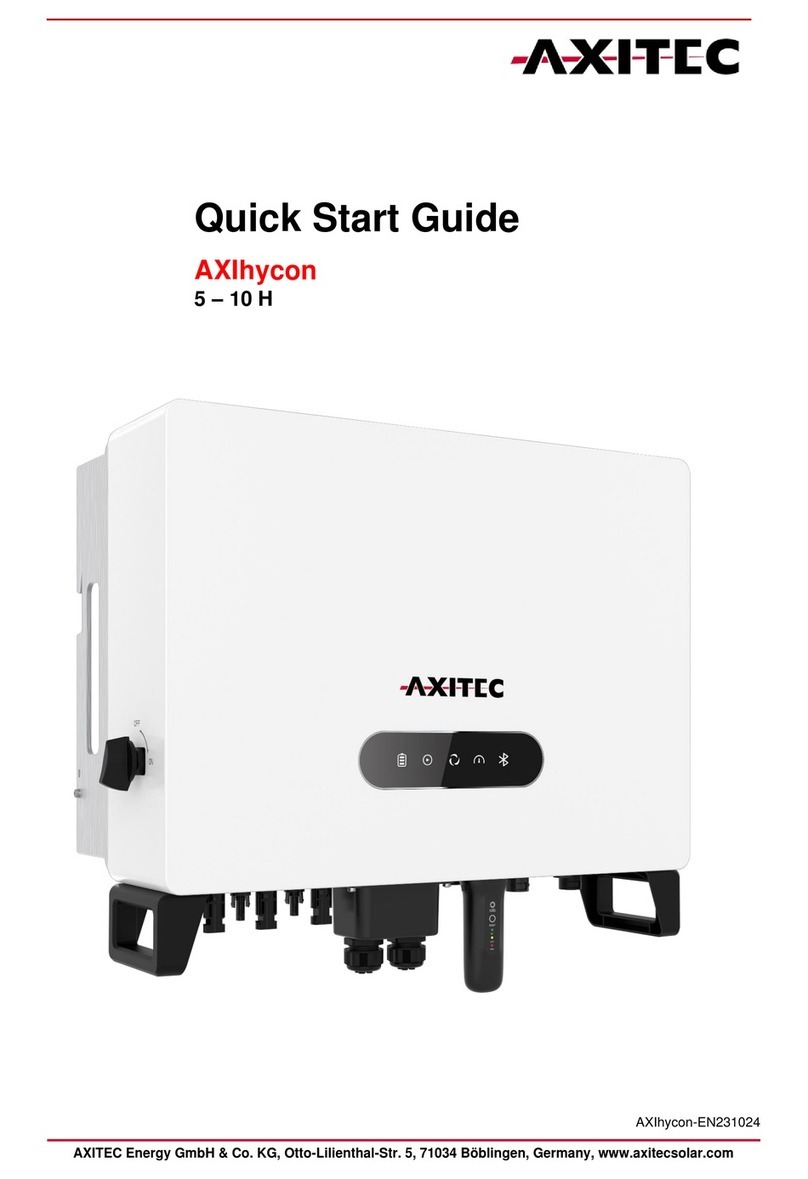Installation Manual
Page 9 / 16
4. Electrical Installation
The electrical characteristics are within ±3% percent of the indicated values of Isc, Voc, and Pmax
under standard test conditions (irradiance is 100 mW/cm2, AM 1.5 spectrum, and a cell
temperature of 25°C (77°F). A module with exposed conductive parts is considered to be in
compliance with UL 1703 only when it is electrically grounded in accordance with the instructions
presented below and the requirements of the National Electrical Code (NEC).
For installations in Canada, shall be in accordance with CSA C22.1, Safety Standard for Electrical
Installations, Canadian Electrical Code, Part 1.
4.1. Modules should be mounted to maximize direct exposure to sunlight and to eliminate
or minimize shadowing. Even partial shadowing can substantially reduce module and
system output. Furthermore, partial shadowing can elevate the shaded portion’s
internal temperature, which may lower output and shorten module life. Bypass diodes
are factory installed. Blocking diodes should be installed in series with each module or
series string to prevent possible back flow of energy through the modules when
modules or strings are connected in parallel or used in conjunction with a battery.
4.2. Whenever necessary to comply with local codes, use a listed fuse or circuit breaker,
rated for the maximum series fuse rating of the module and the system voltage.
4.3. All electrical components should have ratings equal or greater to the system rating. Do
not exceed the maximum allowable system voltage as listed on the module label. All
module frames should be grounded for safety.
4.4. Under normal conditions, a photovoltaic module may experience conditions that
produce more current and/or voltage than reported at Standard Test Conditions.
Accordingly, the values of short circuit current, and open circuit voltage, marked on
modules should be multiplied by a factor of more than 1.25 when determining
component voltage ratings, conductor capacities, fuse sizes, and size of controls
connected to the module output. Rated electrical characteristics are more than 10
percent of measured values at Standard Test Conditions of: 1000 W/m2, 25℃cell
temperature and solar spectral irradiance per ASTM E 892.
4.5. Axitec LLC modules are equipped with factory-installed wires and quick connectors.
These modules have been designed to be easily interconnected in series. Each module
has two single-conductor wires, one positive and one negative, that are pre-wired
inside the junction box. The connectors at the opposite end of these wires allow easy
series connection of adjacent modules by firmly inserting the male connector of a
module into the female connector of an adjacent module until the connector is fully
seated. For more information, please See module literature for appropriate mating
connectors.
4.6. A separate return wire or wires may be required to run the positive and negative
terminations of the series string of modules to the load. Male and/or female
connectors pre-attached to wires may be used at the string terminations for return
wire connections and/or for source circuit box terminations.
4.7. All modules have (3) by-pass diodes installed.





























